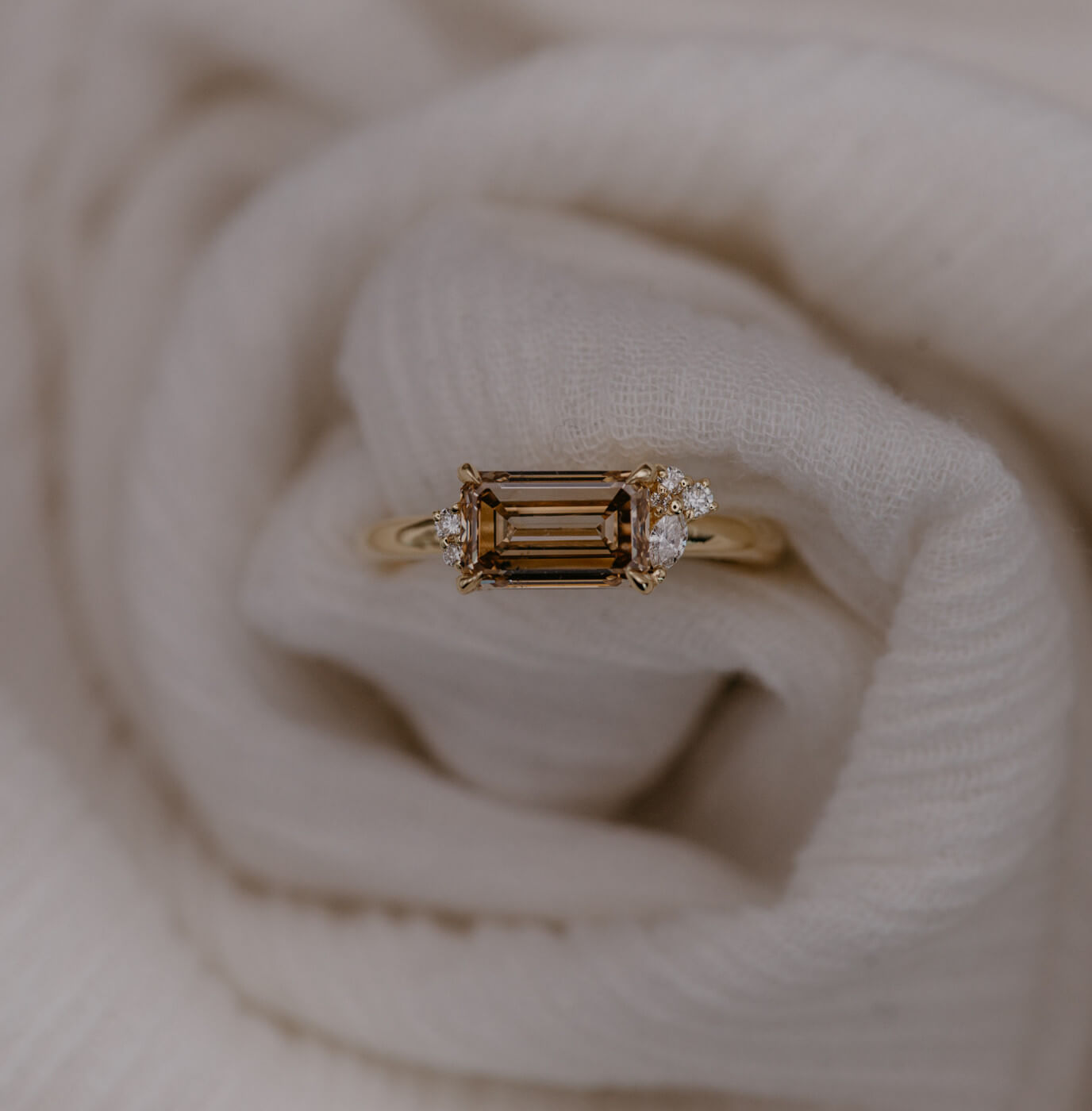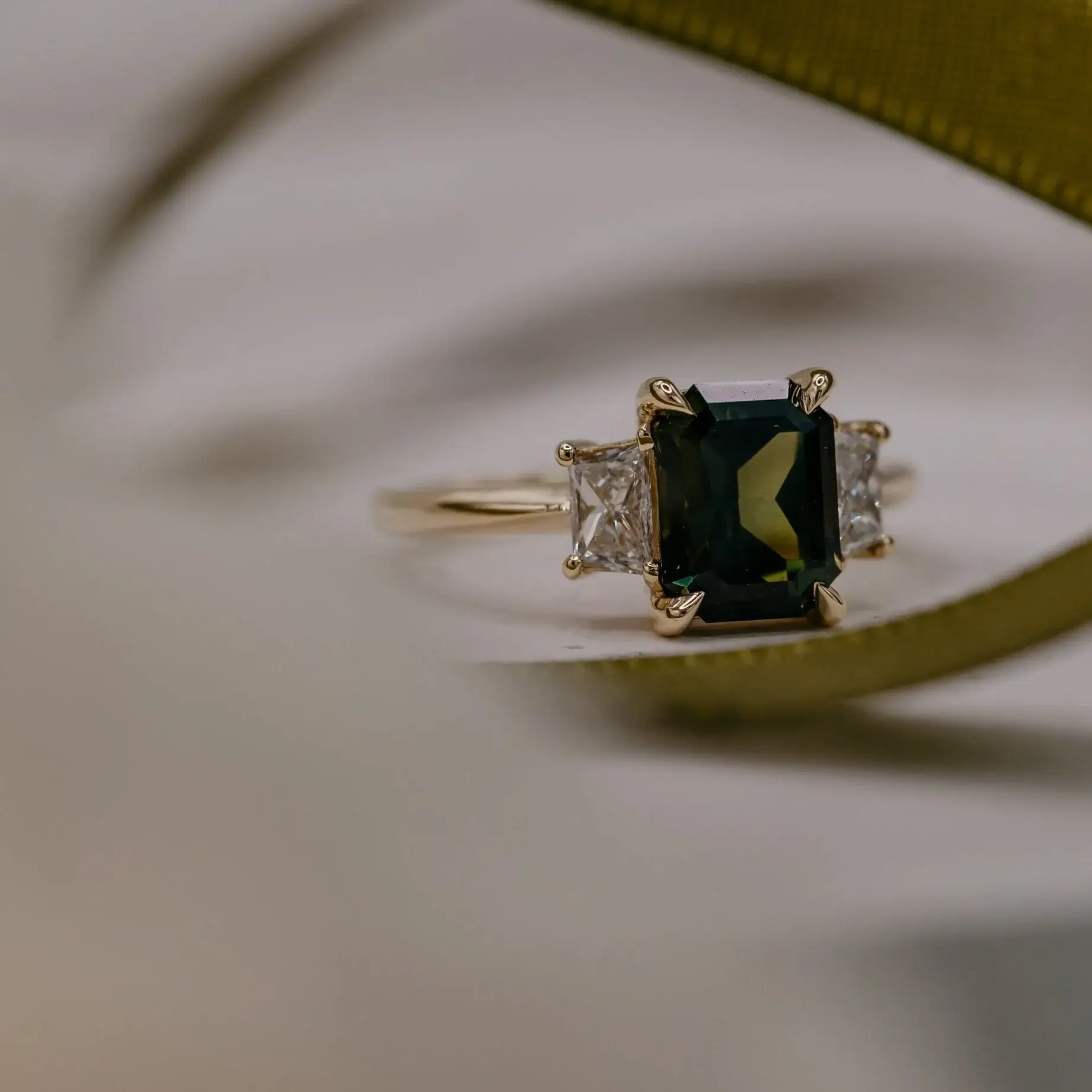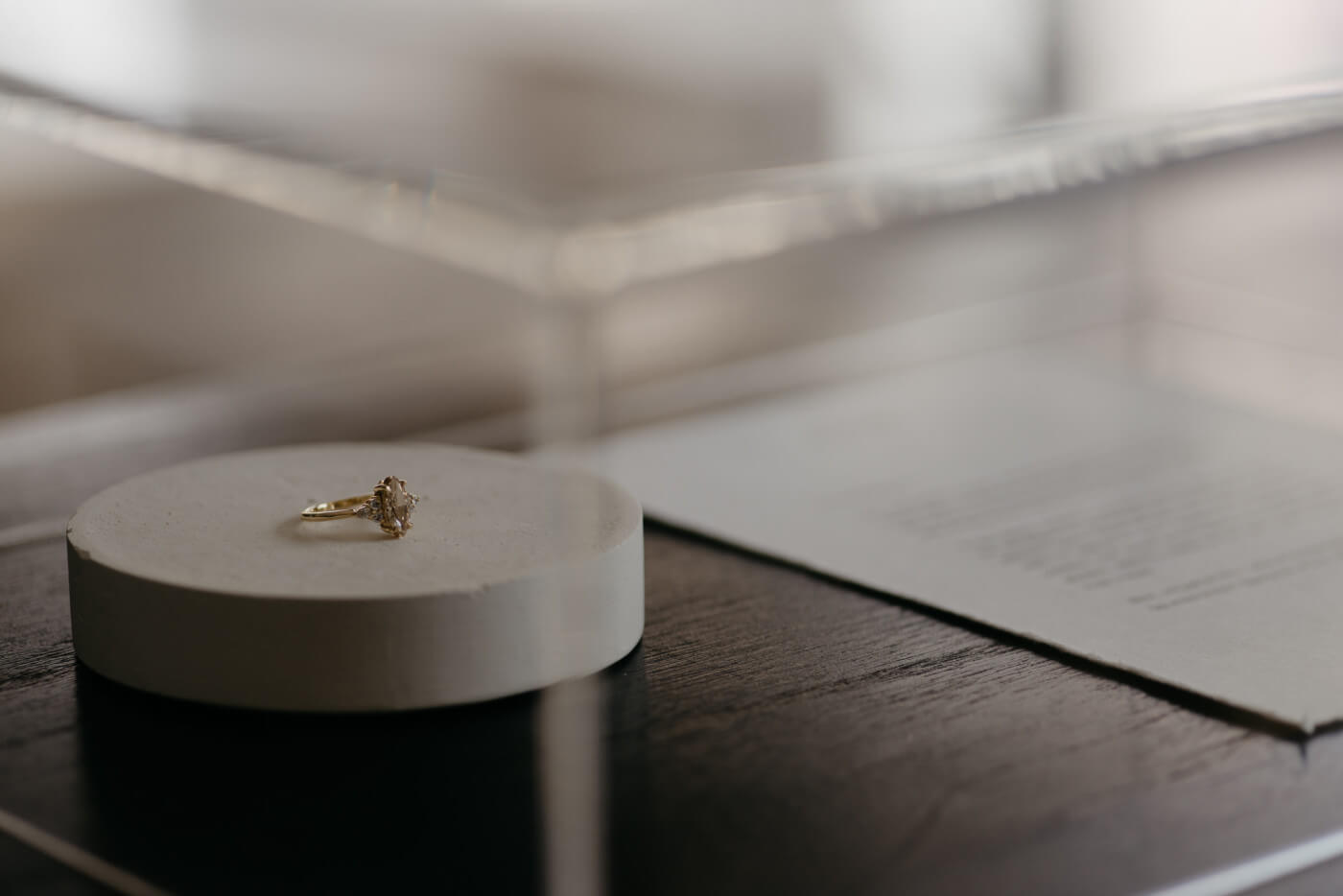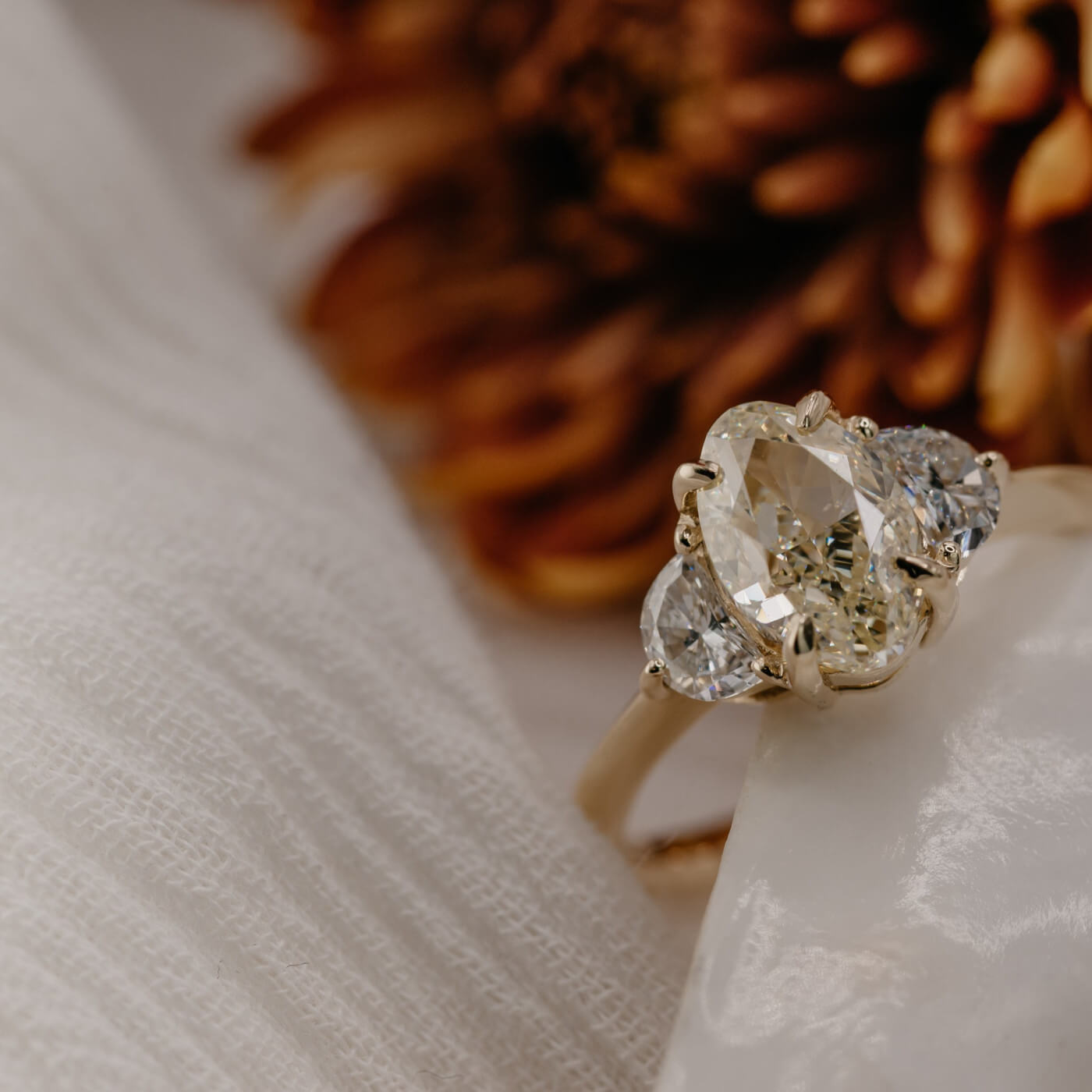This is the Lei è Engagement Ring Journal.
Discover how to maximise your budget, decode the diamond industry, and ensure a smooth consultation experience.
Series Two…
Getting the most out of your budget
This week we are looking at how to unlock unrecognised diamond value.
“Discounted Diamonds” Part 1.
This is a bit of a red herring. It should read, ‘where you can discount yourself on’... As in, where you can make substitutions and allow a bit of slack in certain areas, to stretch that budget. Again, finding an arbitrage opportunity.
Diamonds are somewhat of a currency in universal spot value. Meaning that there are no geographical or market dependent variables that dictate a price variance. Prices are set globally through the diamond rapaport. You can’t find ‘cheap diamonds’ (to any meaningful degree) by shopping different supply chains. The relation to currency would be - the same way you can’t source ‘cheap’ Australian dollars in a different market.
You can debate the nuances here, but we’re not here to play penny pick-up. At the top level, this is a truism. When all parts are equal, colour, clarity, cut, carat… You’ll pay the same, no matter where you source that diamond.
Therefore, the savings or the ‘discounted’ value of diamonds is within the devilish little details.
And, I’m going to explain how you can take advantage of certain characteristics in order to get more bang for your buck.
Alright, how deep should we go on this…? I don’t want to flood your brain with semi-relevant intel that may force out some more important information, such as your anniversary date or pin code.
So, what I will do is separate this out into two parts.
-
HOW TO read a diamond cert (as a consumer)
-
HOW TO find discounted value
Sound good? Alright, let’s crack on.
THE DIAMOND CERT;
Alright before I feed you some ideas on where to rustle about for value, we need to establish some context. So let me give you a run down on how to read a diamond cert.
Here’s what we are looking at;
Section 1 - Cut shape, cutting style and dimensions
This contains the fundamental structural details.
-
Cut shape, will be something you are likely most familiar with. Very easy to recognise and the decisions around ‘is this the stone for me’ , will be made prior to flicking through the GIA Cert. There won’t be a whole lot of further info to obtain through the cert.
-
Cutting style is a little more complex. However not difficult to understand. It refers to; either brilliant or step cut faceting style.
(Facets being the small flat surfaces that are cut onto the surface of the stone)-
Brilliant Cut diamonds are designed to maximise sparkle and brilliance. They have a complex faceting pattern that includes many small, triangular facets on both the crown (top) and pavilion (bottom) of the diamond. The facets are strategically placed to allow light to enter the diamond, bounce around inside, and then exit with a burst of colourful flashes (fire) and intense brightness (brilliance).
-
Step Cut, as the name suggests, have facets that resemble steps or parallel lines. The facets are generally rectangular or trapezoidal in shape. They have fewer facets compared to brilliant cuts, and they are larger and broader. These facets create a more subdued and understated play of light. I always like to think of step cuts as longer ‘windows’ for viewing the internal beauty of the stones.
-
Section 2 - The Four C’s
… which you have probably heard about. So I won’t drag it out, instead I’ll give it a swift digestible twist. Also, this is where we’ll do most of our work in the next section (finding value).
-
Carat Weight; the weight of the stone. It’s simply a unit of measure.
1 carat is 0.2 grams. Or, 1 gram is 5 carat. You’ll never need to do this equation, but many people don’t know this, so it’s a fun fact to flex to your pals. Just divide your carat by 5 and that’s its weight in grams. -
Colour Grade; (this is specifically for white diamonds - I’ll explain later). This is just the colour ‘quality’ on an alphabetical scale from D up to Z.
D, E and F being essentially colourless, then up the scale, it will gain more of a warm hue. I put “quality” in inverted commas, because unlike the other characteristics, there is no intrinsic difference in the quality beyond what we are told is the more desirable option, (a lot more on this later). -
Clarity Grade; this assesses the internal and external inclusions or blemishes. Think, if these were my glasses, how clear and therefore how much clarity would I have when looking through them. The grade goes;
-
F - Flawless - No internal or external flaws. Perfect, really. Rare and highly valuable.
-
IF - Internally Flawless
-
VVS 1- Very Very Slightly Included
-
VVS 2 - Very Very Slightly Included
-
VS 1- Very Slightly Included
-
VS 2- Very Slightly Included
-
SI 1- Slightly Included
-
SI 2- Slightly Included
-
I 1 - Included
-
I 2 -Included
-
I 3 - Included. Very pronounced and numerous inclusions. These have the most severe and very noticeable imperfections.
-
I always have a giggle at the bizarrely, almost childlike use of ‘very’ when describing the inclusions. Feels like you’re about to overdose on descriptive words, ‘very very slightly’. Reminds me of Will Ferrell in Step Brothers describing himself as a singer. “I’m really really good”.
Anyway, back to diamonds. Sorry.
I won’t bore you with a full breakdown of the clarity grades, just know that F is the highest grade and most expensive and I 3 is the most included. The number 2 after the grade, just means slightly more included than the 1.
One final note on this; these inclusions are graded under 10x magnification. Not to say they aren’t noticeable, but its worth knowing the scale we are looking at here.
-
Cut Grade; this evaluates how well it was cut in relation to the proportions, symmetry and polish. It’ll be graded from Excellent to Poor. This is actually more important than it gets credit for.
An untrained eye will notice the difference between an excellent and poor cut stone, even if they aren’t actually sure why…
However, the difference between excellent and very good, which would have no noticeable visual decline for 99% of people, can fetch an additional 10k per carat. Wild. More on this in the next section.
Section 3 - Symmetry, Polish and Flurosence
Without nerding out on the diamond cutting process, I’ll keep it to window-sill chatter. Some basic points that you could bark at your neighbour from the kitchen window.
-
Symmetry is how precise the facets have been aligned and cut into the stone. A diamond cutter has a recipe to follow, where to cut and on what angle etc. and how well they nail this formula, will result in the best return of brilliance and sparkle.
-
Polish; refers to the surface treatment. How well the surface of the diamond has been polished. Any blemishes or external flaws.
-
Fluorescence, is a funny one.. Unlike polish and symmetry, fluorescence is completely subjective and based on personal preference. Symmetry can be technically wrong and it will affect the visual appearance of the diamond. Polish as well, can be objectively poor. However, fluorescence is a bit of grey area.
It is a naturally occurring phenomenon in some diamonds where the diamond emits a soft glow or fluorescence when exposed to UV light, such as sunlight. It has it’s pro’s and con’s which we’ll get into in the next section - but right now, just get your head around the fundamental concept. A strong presence of fluorescence will mean the stone has more of a blue glow under UV.
Section 4-This is a visual representation of the proportions
Nothing massive to gain from this section, as its covered in the symmetry and cut grading. However, it can explain price variance. One aspect that I would point out is, ‘girdle thickness’. We don’t want these girdles being very thick, extremely thickOR thin (it’ll be open season for damage on those thin girdles).
More on this later, but just keep this in mind.
One other focal point is whether or not the diamond has a culet. Which is a flat facet directly on the tip of the pavilion (the bottom of the cone). To be honest, although many cutters have explained the pros and cons of a culet, it still doesn’t make a lot of sense to me. I’d simply say that it is most importantly used to protect the diamond from damage at its most vulnerable section. If its got one, ok, I guess. Just make sure its not too visible from the top. If it doesn’t, all good.
Section 5 - Clarity Characteristics
Clarity Characteristics section will map out where the inclusions are located as well as the type of imperfection. There is two main takeaways for this section;
-
Its a great tool for identifying that your diamond is the same as the GIA cert. For us, this is what we use it for most regularly. You can map out the inclusions and make sure it matches.
-
Secondly; where the inclusions are situated will greatly affect whether or not you can easily notice them. Smack bang in the middle of the table (large flat area on the face at the top), will obviously be more easily recognised. Whilst hidden under a heavily faceted corner, will be less noticeable. Worth knowing for sure.
Alright, let’s touch on the best of it. If you can just latch onto a few key points, then you’ll be sweet. Mega summary in my hierarchy of importance;
(This is assuming you know what shape you want, what carat and colour)...
-
Check the millimeters and compare against other options. Get the widest millimeters, even 0.5mm is noticeable in this size. It’s always the easiest way to have a more impactful stone.
-
Keep your cut, symmetry and polish to Very Good+
-
Avoid ‘very thick’, ‘extremely thick’ girdles, as well as thin girdles. Stick around Medium to thick.
-
Check the placement of the inclusions. Try avoid having them dead centre within large facet windows.
-
Fluorescence will give you some juicy feedback, so you need to know if you want that or not.
ONWARD… Next Week, we have:
PART TWO “HOW TO find discounted value”
Organise a time below, to either come by the Lei è studio or book in a virtual consultation.




